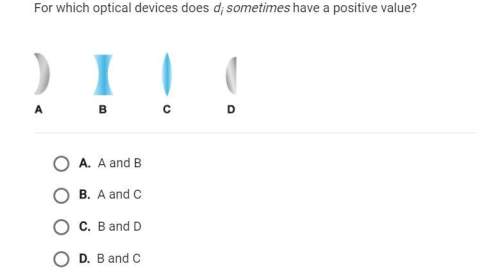
Intro
A large and heavy asteroid is observed from a nearby satellite to be stationary. A smaller and lighter
asteroid moving to the right with constant velocity v hits the larger asteroid. You may ignore the
gravitational force of the asteroids on each other.
mom
t
After the larger asteroid is hit, what is the velocity of the center of mass of the system of two asteroids as
seen from the satellite?


Answers: 2
Another question on Physics

Physics, 21.06.2019 23:30
What are chlorofluorocarbons and what impact do they have on the atmosphere?
Answers: 1

Physics, 22.06.2019 06:40
Use the right-hand rule for magnetic force to determine the charge on the moving particle. this is a charge.
Answers: 1

Physics, 22.06.2019 14:30
The man of mass m1 and the woman of mass m2 are standing on opposite ends of the platform of mass m0 which moves with negligible friction and is initially at rest with s = 0. the man and woman begin to approach each other. derive an expression for the displacement s of the platform when the two meet in terms of the displacement x1 of the man relative to the platform.
Answers: 1

Physics, 22.06.2019 17:00
In the future, people will only enjoy one sport: electrodisc. in this sport, you gain points when you cause metallic discs hovering on a field to exchange charge. you are an electrodisc player playing the popular four disc variant. the disks have charges of qa = −8.0 µc, qb = −2.0 µc, qc = +5.0 µc, and qd = +12.0 µc. (1) you bring two disks together and then separate them. you measure the resulting charge of these two disks and find that it is +5.0 µc per disk. which two disks did you bring together? (a) a and b (b) a and c (c)a and d (d)b and c(e) b and d (f) c and d. (2) you bring three disks together and then separate them. you measure the resulting charge of these three disks and find that it is +3.0 µc per disk. which three disks did you bring together? a, b, and c (a) a, b, and d (c) a, c, and d (d) b, c, and d. (3) given the resulting charge of each disk measured in (b) is +3.0 µc, how many electrons would you need to add to a disk of this charge to electrically neutralize it? electrons
Answers: 3
You know the right answer?
Intro
A large and heavy asteroid is observed from a nearby satellite to be stationary. A smaller an...
Questions

Mathematics, 03.02.2020 08:43


Mathematics, 03.02.2020 08:43

Mathematics, 03.02.2020 08:43

Biology, 03.02.2020 08:43


Mathematics, 03.02.2020 08:43

History, 03.02.2020 08:43

History, 03.02.2020 08:43

History, 03.02.2020 08:43



Biology, 03.02.2020 08:43

Biology, 03.02.2020 08:43


History, 03.02.2020 08:43



Physics, 03.02.2020 08:43

History, 03.02.2020 08:43




